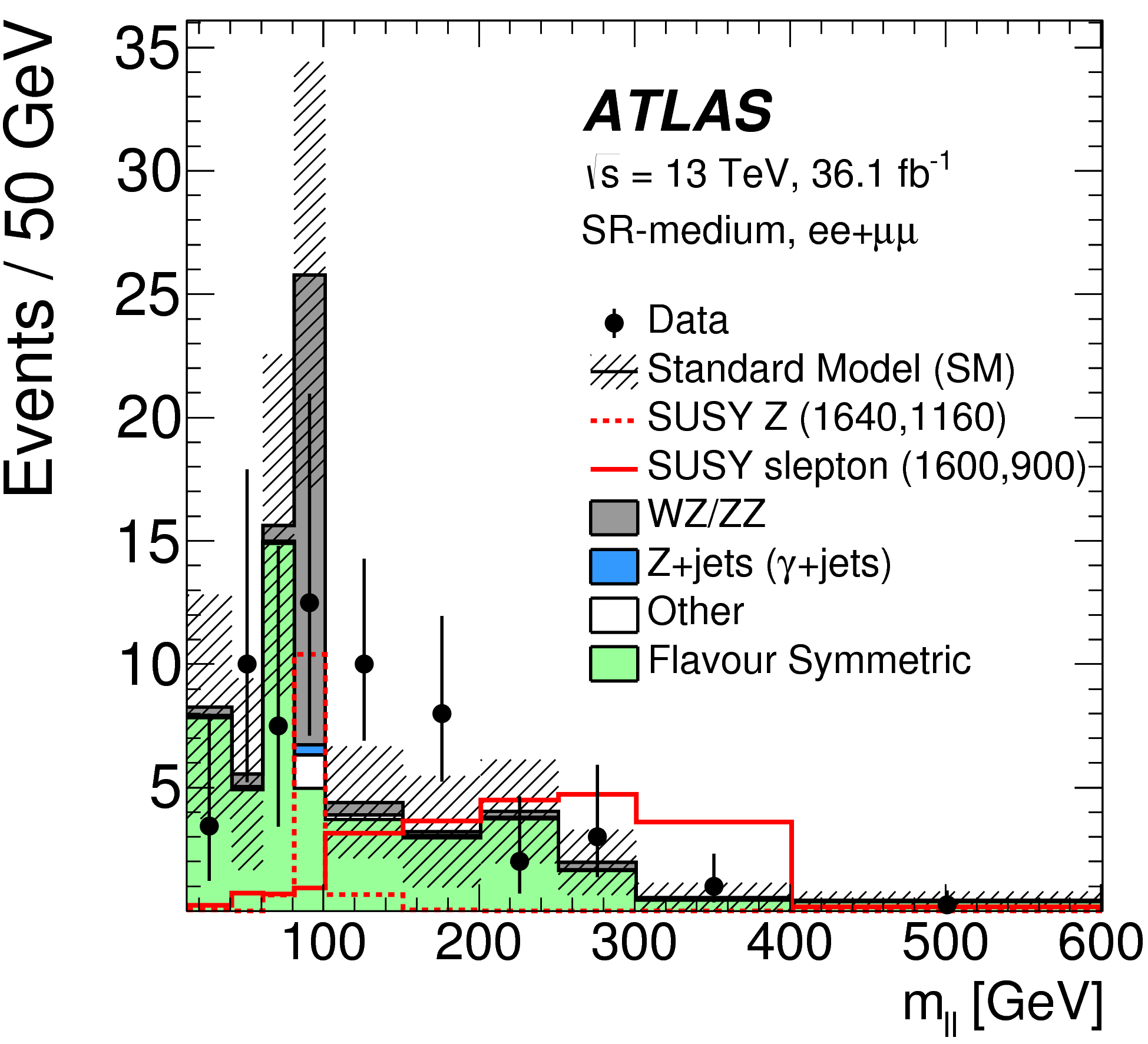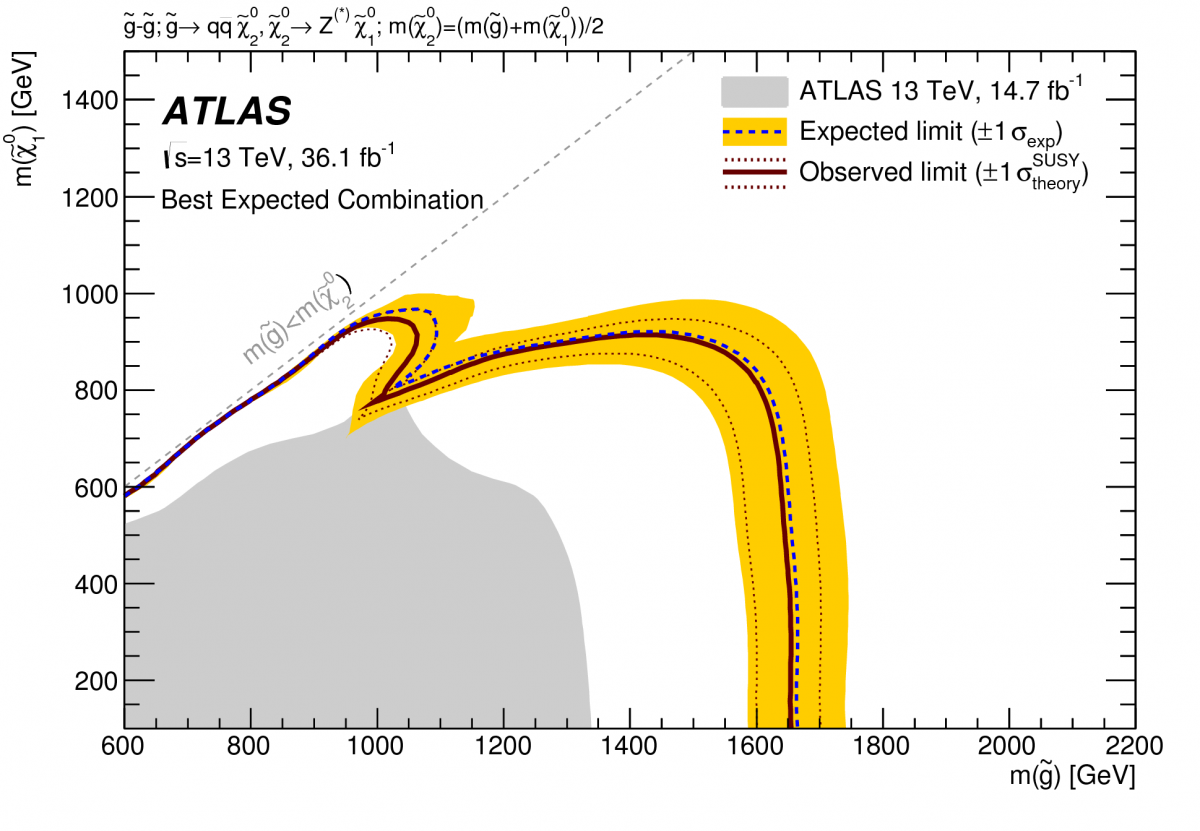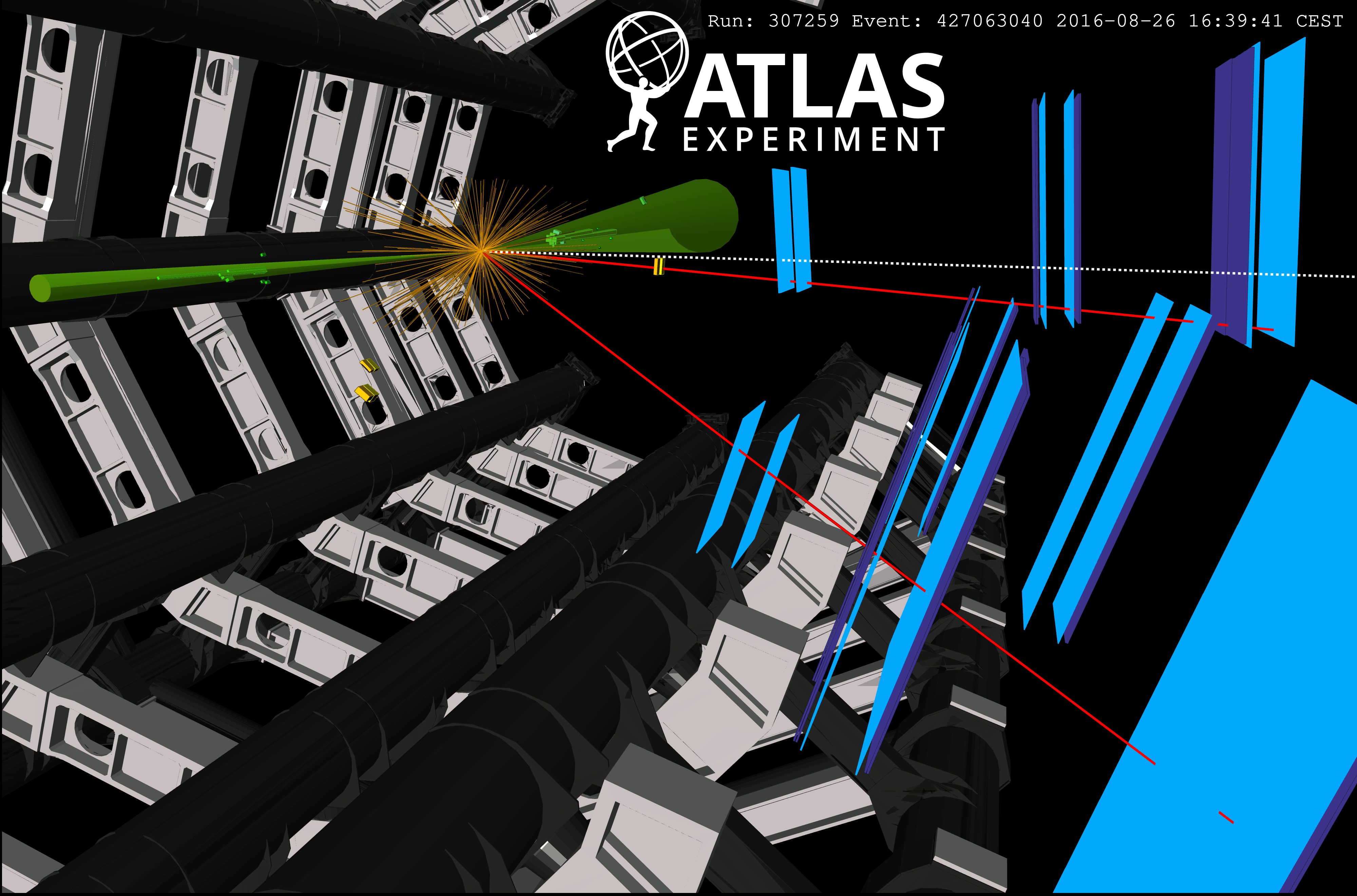The edge of SUSY
2 June 2018 | By

Physicists dream about finding bumps, or excess signals in the data. Bumps tend to point to something new that cannot be explained by the Standard Model, which gives the currently best understanding of the universe in spite of its deficiency to explain several important observations.
The ATLAS experiment has just completed a new search for evidence of supersymmetry (SUSY), a theory that predicts the existence of new “super-partner” particles, with different properties from their Standard Model counterparts. This search looks for SUSY particles decaying to produce two leptons and scrutinises the invariant mass distribution of these leptons, hoping to find a bump.
The search is exciting, as it has a history of small bumps that could point to new physics. The ATLAS and CMS collaborations both reported moderate excesses in searches with two leptons, jets and missing transverse momentum using the 8 TeV LHC dataset. For ATLAS, there was a bump in the data around the Z boson mass, while CMS reported an excess in data at a slightly lower mass. As neither experiment was able to confirm each other’s findings the first time around, a repeat was scheduled for Run 2. After waiting through the first long shutdown of the LHC, both ATLAS and CMS checked each other’s analyses with new 13 TeV LHC data and ruled out any excess. It was time to move on, to update the searches to target new possible bumps at 13 TeV.
The new ATLAS paper reports on a search for new physics processes beyond the Standard Model, taking advantage of the larger Run-2 dataset.

The new ATLAS paper reports on a search for new physics processes beyond the Standard Model, taking advantage of the larger Run-2 dataset by requiring stricter, more signal-like criteria that reject more Standard Model background events. The expected shape of the lepton invariant mass distribution is exploited to identify either an “on-Z” mass peak, or an edge structure in the distribution indicative of a kinematic endpoint resulting from SUSY particle decays, as shown in Figure 1. By lowering the transverse momentum threshold for the leptons, the search additionally probes more “compressed” SUSY signal models, where the difference in mass between new particles is small. This results in lower momentum, harder-to-detect decays in the detector. Could SUSY be hiding within these more difficult-to-find models?
In this case, it appears not. No excess has been observed in the Run-2 data so far, and so these results further extend our limits on excluded SUSY models, as presented in Figure 2. With the excesses reported by ATLAS and CMS at 8 TeV now a distant memory, all eyes have turned to the full Run-2 dataset currently being collected, as we continue to explore the corners where new physics might be hiding.
Links:
- Search for new phenomena using the invariant mass distribution of same-flavour opposite-sign dilepton pairs in events with missing transverse momentum in 13 TeV proton-proton collisions with the ATLAS detector (arXiv: 1805.11381, see figures)
- Search for new phenomena in events containing a same-flavour opposite-sign dilepton pair, jets, and large missing transverse momentum 13 TeV proton-proton collisions with the ATLAS detector (Eur. Phys. J C 77 (2017) 144, arXiv: 1611.05791, see figures)
- CMS Collaboration: Search for new phenomena in final states with two opposite-charge, same-flavor leptons, jets, and missing transverse momentum in proton-proton collisions at 13 TeV (JHEP 03 (2018) 076)
- Search for supersymmetry in events containing a same-flavour opposite-sign dilepton pair, jets, and large missing transverse momentum in 8 TeV proton-proton collisions with the ATLAS detector (arXiv: 1503.03290)
- CMS Collaboration: Search for physics beyond the standard model in events with two leptons, jets, and missing transverse momentum in proton-proton collisions at 8 TeV (arXiv: 1502.06031)
- See also the full lists of ATLAS Conference Notes and ATLAS Physics Papers.



